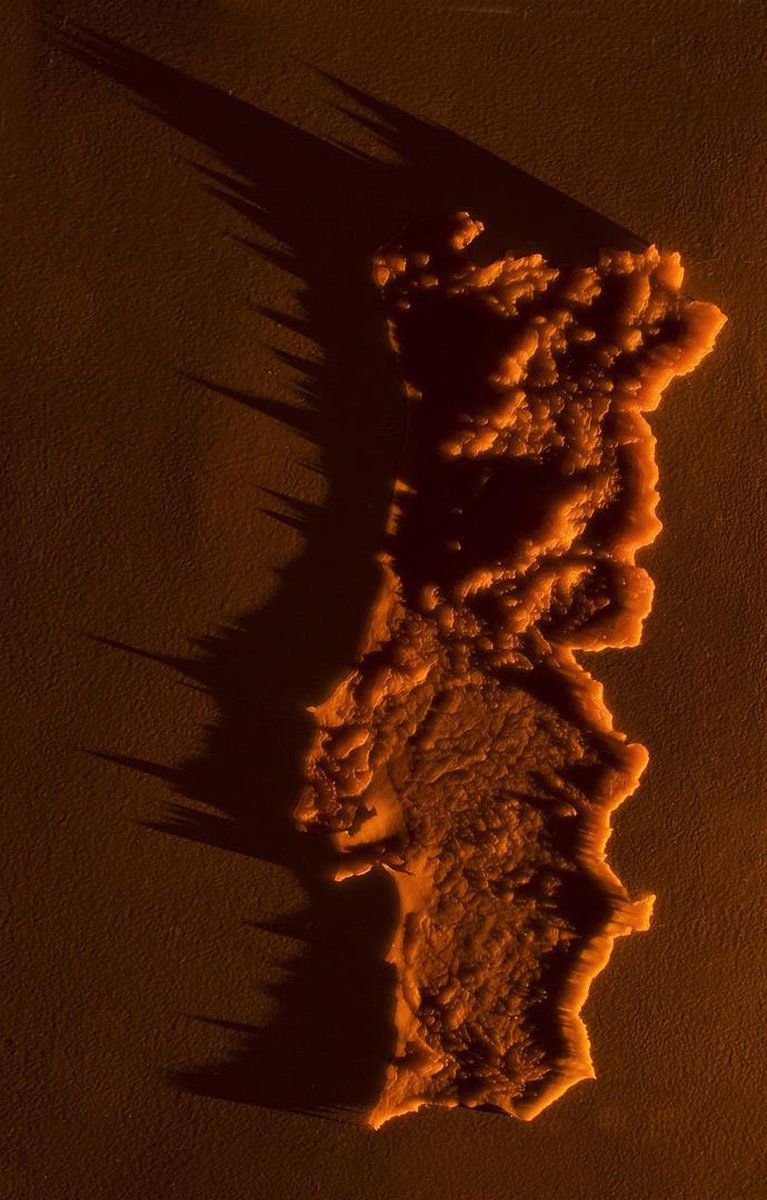An exhibition of works by Fernando Brito will take place at Culturgest from April 2 til the 28th as part of the 50th anniversary celebrations of the 25th of April Revolution. Mapa orográfico do território português, à escala 1:625000, sujeito às condições luminosas do dia 25 de Abril de 1974, às 08h00, 1999-2009, a work by the artist that belongs to the Collection Caixa Geral de Depósitos, is the highlight on this occasion. The work was acquired from the artist in 2022, when accquisitions were made to mid-career artists not yet represented in the Collection.
The installation, devised and recorded in 1999 in the artist’s small work-in-progress notebook, was shown for the first time at Chiado 8 – Arte Contemporânea, Lisbon, 2009, as part of the “Ich bin ein Baixinher” exhibition curated by Bruno Marchand. At the beginning the work was only meant to depict the idea conveyed by the title. Its substance came later. Making use of a latex mould of a topographic map of mainland Portugal and islands – the sort of map that was to be found in all primary schools during the Second Republic also known as Estado Novo –, the artist applied a spotlight intended simulate the dawn of the day of the Revolution. In this historic and precise narrative, the artist freezes the moment in which the country saw the light of freedom and its immense possibilities, “in an admittedly critical parody about the ways of getting closer or moving away from historical avant-garde images.” (Cristina Campos).
An erratic and dilettante artist, “escapist and elusive” (Ivo Martins), Fernando Brito, born in Pampilhosa da Serra in 1967, studied painting at Escola Superior de Belas-Artes de Lisboa. His pictorial work was characterized by an ironic stance on Pop culture and a taste for Abstract Expressionism. In the 80s and 90s he was a professor of Visual Art in Santarém and, later, a professor of Fine Arts at Escola Superior de Artes e Design, Caldas da Rainha. In spite of his artistic career on the fringe, his presence is well established in the Portuguese art scene: the Homeostético Group, formed with Ivo, Manuel João Vieira, Pedro Portugal, Pedro Proença and Xana, in 1983; Geração de 90, an informal group that included Carlos Vidal, João Louro, Rui Serra, Paulo Mendes, João Tabarra, Miguel Palma and João Paulo Feliciano. His recent work includes sculptures and installations that address modernist and historical processes. His rare exhibitions include “Der Geist unserer Zei”, curated by Pedro Cabral Santo at Centro Cultural de Vila Flor, Guimarães, 2010.
Hugo Dinis
1 x 1012 x 534 cm
Inv. 683036


